A blown film machine is a mechanical equipment that heats and melts plastic particles and then blows them into films. Its basic working process is as follows:
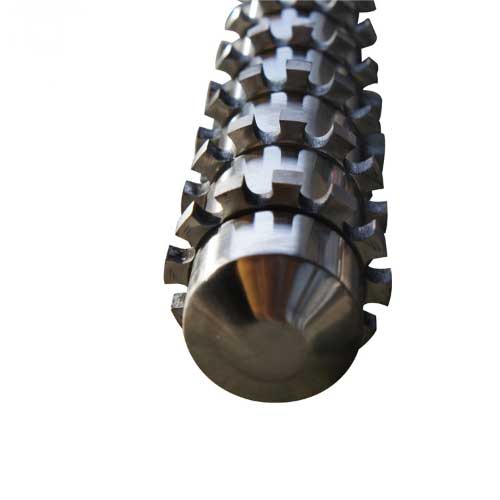
Firstly, in the feeding process, dry polyethylene particles are added into the hopper. The plastic particles enter the screw by their own weight from the hopper. When the pellets come into contact with the threaded helical edge of the screw, the rotating helical edge generates a thrust perpendicular to the helical edge surface on the plastic, thus pushing the plastic particles forward. During the pushing process, due to the friction between the plastic and the screw, between the plastic and the barrel, as well as the collision friction among the particles, and also thanks to the external heating of the barrel, the plastic particles will gradually melt and form a molten state.
Then, in the extrusion and film-forming process, the molten plastic is filtered to remove impurities through the die head and then comes out from the die orifice, emerging as a cylindrical melt at this time. Subsequently, the melt passes through an air ring. The air blown by the air ring cools the melt on one hand and injects a certain amount of compressed air into the cylindrical melt on the other hand, causing the melt to expand laterally and form a film bubble.
After that, in the cooling and solidification process, the blown film bubble continues to cool in the air and gradually solidifies and takes shape, maintaining its shape and size.
Finally, through the traction of devices such as the fishtail plate and traction rollers, the film moves forward at a constant speed to ensure the flatness and uniformity of the film, and then it is wound up by the winding device to form a finished cylindrical film.
In the entire working process of the blown film machine, the screw plays a central driving role. It is a key component that promotes the continuous forward movement of plastic particles and gradually completes a series of transformations from solid state to molten state and finally to film formation. Its operating state, design parameters, etc. will have a significant impact on the production efficiency of the blown film machine and the quality of the produced film.
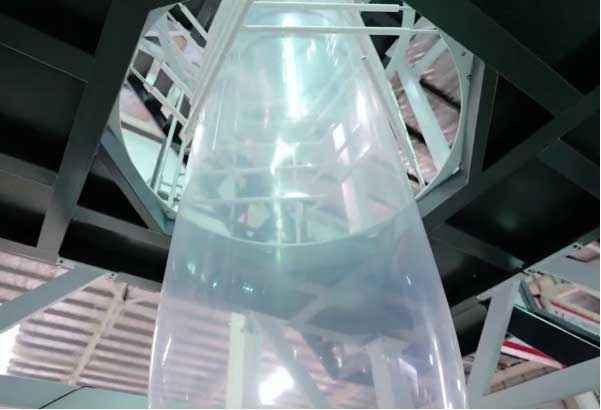
The length-to-diameter ratio of 32:1 means that the length of the screw has a relatively large extension compared to its diameter. Compared with screws with a common length-to-diameter ratio of 20 - 30, it has many prominent advantages.
In terms of material conveyance, a large length-to-diameter ratio makes the residence time of materials in the screw more reasonable and sufficient. After the plastic particles enter from the feeding port, they have a long enough "journey" to be gradually pushed forward with the rotation of the screw, and can be conveyed to the next processing step more smoothly and orderly, avoiding material congestion or uneven conveyance that may occur due to a short conveyance distance.
For the material compression process, a length-to-diameter ratio of 32:1 can make the compression more sufficient. When the screw rotates, as the material moves along the longer threaded part, the squeezing force it receives can be more gradual and continuous, which helps to compact the material and better prepare for subsequent plasticization, thereby improving the physical and mechanical properties of the product.
In terms of plasticization, a large length-to-diameter ratio increases the heating time of the plastic in the barrel and makes the temperature distribution more reasonable. The material can absorb heat within a more sufficient time and fully rub and mix with the screw and the barrel, thus making the plasticization more sufficient and uniform, and the appearance quality of the produced film will be better. For example, when processing some polyethylene raw materials with high plasticization requirements, the screw with this length-to-diameter ratio can ensure that the raw materials are completely plasticized, avoiding quality problems such as un-melted particles on the film surface or uneven color. At the same time, this length-to-diameter ratio can also make the extrusion more stable, and the extrusion volume can be increased by about 20% - 40% compared with screws with an ordinary length-to-diameter ratio, greatly improving the production efficiency of the blown film machine.
However, when choosing such a large length-to-diameter ratio, factors such as material characteristics should also be considered. For the processing of thermosensitive materials such as PVC, since they are prone to decomposition when staying at a high temperature for too long, it is not suitable to use a screw with such a large length-to-diameter ratio; but for single-layer PE blown film processing, this length-to-diameter ratio can well meet the needs of producing high-quality films.
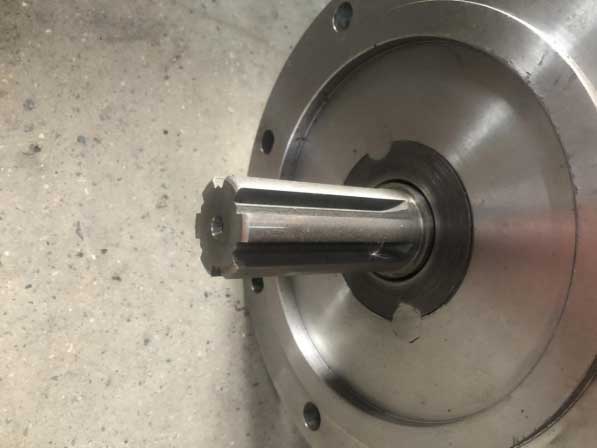
There are some special parts and elaborate designs on the 32:1 ultra-high-speed screw, and each of them plays a crucial role and jointly contributes to the efficient and stable operation of the blown film machine.
For example, the U-shaped groove is set on the inner surface of the middle part of the screw. During the operation of the blown film machine, the U-shaped groove can achieve the function of circulating water cooling. We know that the screw will generate heat due to factors such as friction during long-term operation, and too high a temperature may damage the plastic film being processed and affect the production quality. However, with the U-shaped groove, the circulating water continuously circulates in the groove and continuously takes away the heat generated on the screw, always keeping the screw in a low-temperature state, ensuring the processing quality of the plastic film and guaranteeing that the produced film is complete and has good performance.
Looking at the threaded ring set on the outer surface of the middle part of the screw, it is tightly and fixedly connected to the screw body through a threaded groove. The design of the threaded ring increases the friction between the raw material and the screw. When the plastic particles come into contact with the screw and move with the rotation of the screw, the threaded ring enables the particles to be better pushed forward with the rotation of the screw, avoiding the phenomenon of material sliding or stagnation, making the processes of material conveyance, mixing, etc. more smooth and efficient, and thus contributing to the improvement of the overall processing quality, so that the finally blown film can meet high standards in terms of thickness uniformity and strength.
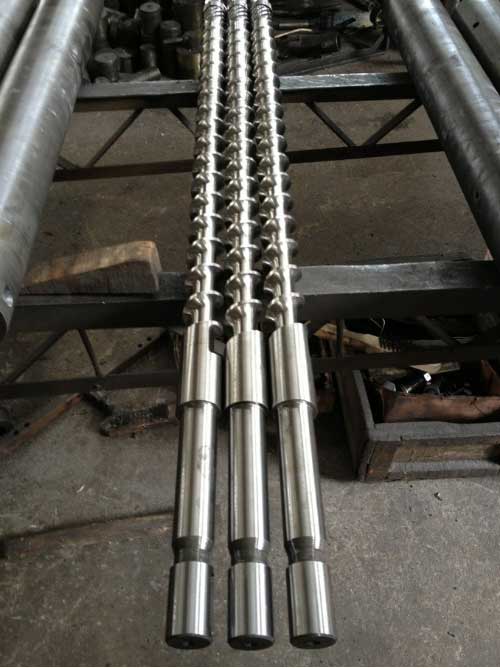
The 32:1 ultra-high-speed screw shows remarkable ultra-high production efficiency in the field of single-layer PE blown film machine. It can achieve high-speed rotation, and compared with ordinary screws or screws with a smaller length-to-diameter ratio, the extrusion volume per unit time has a significant increase.
For example, in actual production applications, a film blowing machine that uses a 32:1 ultra-high-speed screw can extrude up to 90kg/h when the screw diameter is 55mm; when the screw diameter is 65mm, the extrusion volume can be increased to 120kg/h. In comparison, for the same type of screw with an aspect ratio of 28:1, when the screw diameter is also 55mm, the extrusion volume is only about 50kg/h, and the extrusion volume of the 32:1 ultra-high-speed screw is nearly twice that. Moreover, in a continuous and stable production process, this ultra-high-speed screw can maintain a good operating state, allowing materials to be continuously extruded and formed into film, greatly improving the overall production efficiency, shortening the production cycle, and providing a strong guarantee for enterprises to create more products per unit time. The advantage is particularly obvious in the large-scale production of single-layer PE film.
The 32:1 ultra-high-speed screw has unique technical advantages in shearing and mixing, thus enabling the plastic to be fully plasticized. During the process of the screw rotating and pushing the material forward, its reasonable structure design makes the material receive an appropriate shearing force in the barrel. This shearing force can make the plastic particles, between the plastic and the screw, and between the plastic and the barrel fully rub and mix, and the original solid plastic can be more uniformly and thoroughly transformed into a molten state.
The film produced after such full plasticization is more delicate and uniform in texture, without the rough texture caused by unmelted plastic particles. In terms of uniformity, the thickness, strength and other indicators of the film can maintain good consistency in the horizontal and vertical directions. For example, in some food packaging fields with high requirements for film quality, the single-layer PE film produced by the 32:1 ultra-high-speed screw can better meet the requirements of packaging barrier properties, flexibility, etc., ensure the storage safety and quality of food, effectively improve the quality of the film, and make it more competitive in market applications.
During the long-term operation of the blown film machine, the 32:1 ultra-high-high-speed screw shows excellent temperature control ability. As we all know, in blown film production, if the temperature is too high, it is easy to damage the molecular structure of the plastic film, resulting in quality problems such as yellowing and embrittlement of the film, and even affecting the continuity of production, with frequent breakdowns and shutdowns.
The 32:1 ultra-high-speed screw can effectively avoid such situations through special structures and materials. For example, after traditional screws operate for a long time, due through heat accumulation, the temperature in the barrel continuously rises, easily causing local overheating and decomposition of the plastic film being processed, resulting in holes and damages in the film, seriously affecting the product qualification rate, and may also cause production interruptions due to frequent handling of faults. However, the 32:1 ultra-high-speed screw can maintain a relatively stable temperature environment, ensuring that the plastic completes a series of processes such as plasticization, extrusion, and film formation within an appropriate temperature range, guaranteeing the continuity of production and the stability of product quality, so that the finally produced single-layer PE film can stably reach a high-quality standard and meet the quality requirements of different customers for film products.
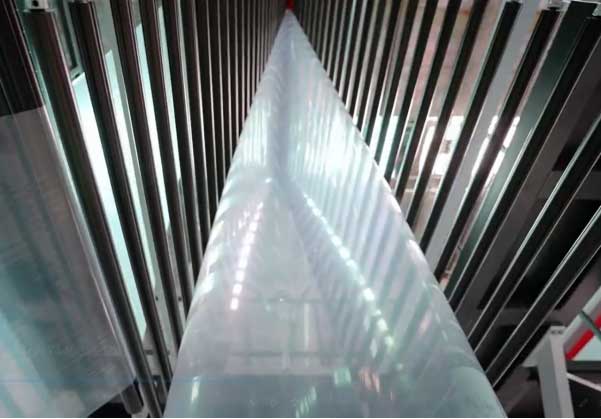
The 32:1 ultra-high-speed screw has an excellent performance in enhancing the film tension. Its unique length-to-diameter ratio and reasonable structure design enable the screw to process the material more fully and reasonably during the operation process.
In the material conveyance stage, due to the large length-to-diameter ratio, when the plastic particles are gradually pushed forward with the rotation of the screw, they can be more stable and orderly, which makes the material enter the subsequent plasticization, extrusion, and other processes in a more uniform and stable state. In the plasticization process, sufficient heating time and reasonable shearing and mixing make the plastic more uniformly and thoroughly transformed into a molten state.
When the melt is extruded from the die head and blown up to form a film bubble, the film formed by the material processed in this way can have its horizontal and vertical tensions significantly enhanced. From the horizontal tension perspective, the high-speed rotation of the screw and the reasonable shearing force make the plastic molecules arranged more closely and orderly in the horizontal direction, as if forming a series of firm "chains", so that when the film is subjected to a horizontal stretching force, it can better withstand and is less likely to break. For example, in some application scenarios of large packaging bags, such as for fertilizers, feed, etc., heavy packaging bags require the film to have sufficient horizontal tension to bear the weight of the items and the external pulling force during handling and stacking. The film produced by the 32:1 ultra-high-speed screw can well meet the requirements.
In terms of vertical tension, its special structure promotes more complete mixing and plasticization of materials in the barrel, making the molecular structure of the film more regular and stronger in the vertical direction. For example, in some use scenarios where the film needs to be hung or wound, the film can remain intact with good vertical tension and will not easily break or fracture.
In general, the enhancement of this tension greatly broadens the application range of the film, enabling it to exhibit excellent performance advantages in many packaging scenarios with high requirements for film strength, providing reliable packaging protection for products.
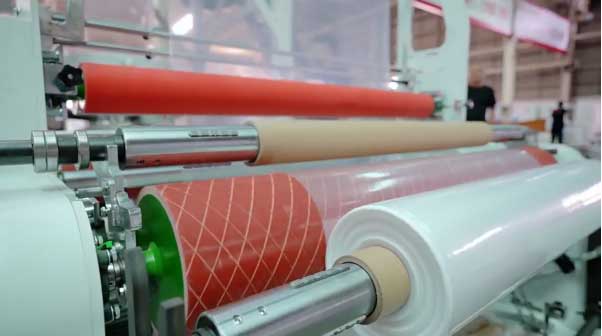
For film production, uniformity is one of the key indicators for measuring quality, and the 32:1 ultra-high-speed screw plays a crucial role in ensuring film uniformity.
This screw can make the plastic melt extrude more uniformly, which benefits from its reasonable length-to-diameter ratio and special structure design. A large length-to-diameter ratio allows the plastic to have sufficient time for heating and mixing in the barrel, and the material can fully absorb heat, rub and mix with the screw and the barrel in a long "journey", thus making the plasticization more sufficient and uniform. At the same time, special parts such as threaded rings set on the screw increase the friction between the raw material and the screw, making the processes of material conveyance, mixing, etc. more smooth and efficient, avoiding the occurrence of non-uniform melt caused by material stagnation or sliding.
In terms of film thickness, uniform melt extrusion can ensure that the film thickness is basically the same at each position after coming out from the die head, and there will be no phenomenon of local overthickness or overthinness. For example, in high-precision packaging fields, such as packaging films for electronic products, the requirement for thickness uniformity is extremely high. If it is too thick, it may affect the fitting degree of the packaging and the overall size of the product; if it is too thin, it may not be able of providing sufficient protection performance. The film produced using a 32:1 ultra-high-speed screw can well meet the strict requirements for thickness uniformity in such high-precision packaging.
From the perspective of uniformity of film density, a sufficient and uniform plasticization process makes the plastic molecules more evenly distributed throughout the film, thereby ensuring the consistency of film density. In some application scenarios that have high requirements for film optical properties, barrier properties, etc., such as fresh-keeping films and electronic films in food packaging, films with uniform density can better play their role in blocking oxygen and water vapor, while also ensuring good transparency, flexibility and other properties. Therefore, the advantage of the 32:1 ultra-high-speed screw in improving film uniformity is of great significance for expanding the application of films in various high-precision and high-performance requirements.
In the actual application scenarios of single-layer PE blown film machine, the 32:1 ultra-high-speed screw shows strong adaptability. Whether it is small-scale customized film production or large-scale batch film manufacturing, it can play a good role.
For small-scale customized film production, many small factories often need to produce film products with different specifications and performance characteristics according to the different requirements of customers. For example, some small workshops that make packaging films for specific products have a small order volume but have high requirements for the precision and quality of the film. The 32:1 ultra-high-speed screw, relying on its reasonable length-to-diameter ratio and excellent temperature control ability, etc., can accurately process the raw materials and achieve stable and high-quality film extrusion. It can ensure that in small-batch production, each batch of film can meet the customized standards of customers in key indicators such as thickness, tension, and uniformity, and can quickly adjust parameters according to the characteristics of different raw materials, flexibly responding to diverse customization requirements.
In large-scale batch film manufacturing scenarios, such as large plastic products companies, a large amount of PE film needs to be produced every day for various product packaging, agricultural covering and other purposes. The ultra-high production efficiency of the 32:1 ultra-high-speed screw is highlighted. It can maintain high-speed and stable operation for a long time, and the extrusion volume per unit time is much higher than that of ordinary screws, which greatly improves the overall production efficiency, shortens the production cycle, and saves time costs for enterprises. For example, after a large enterprise used a film blowing machine equipped with a 32:1 ultra-high-speed screw, the film production order that originally required a week to be completed was shortened to about five days while ensuring quality, effectively improving the company's production capacity and market competitiveness.
From the feedback from many factories of different sizes, high-speed screws have shown good versatility and adaptability under different production scales, which can help enterprises better meet market demand and create more economic benefits.
The 32:1 ultra-high-speed screw has shown commendable flexibility in the adaptation of raw materials. It can effectively process different types of PE raw materials and other processable raw materials that may be involved to meet diverse production needs.
In terms of PE raw materials, it can handle HDPE, LDPE or LLDPE with ease. For example, when processing HDPE raw materials, due to its high density and crystallinity, relatively high hardness and high melt viscosity, the large aspect ratio of the 32:1 ultra-high-speed screw and the special shear mixing structure can fully heat and evenly plasticize the HDPE raw materials. The final extruded film has a smooth surface and a tough texture, which is very suitable for making some industrial packaging films with high strength requirements, such as chemical raw material packaging bags. For raw materials such as LDPE, which are softer and more transparent, the screw can also reasonably adjust the speed, temperature and other parameters to allow it to be evenly extruded and formed to produce soft and transparent films, which can be used in food packaging, cling film and other fields.
In addition to common PE raw materials, the 32:1 ultra-high-speed screw can also play a role in some cases where special additives need to be added or raw material modification is required. For example, when adding antistatic agents, lubricants and other additives to PE raw materials, the screw can fully mix these additives with the PE raw materials during the conveying and plasticizing process to ensure that the produced film has the corresponding functionality. Even when trying to mix some recyclable PE plastic particles with new materials, it can also ensure the good processing performance of the mixed materials, which not only realizes the rational use of resources, but also can produce film products that meet quality requirements, expand the range of raw material selection, reduce production costs for enterprises, and also conform to the concept of environmental protection and sustainable development.
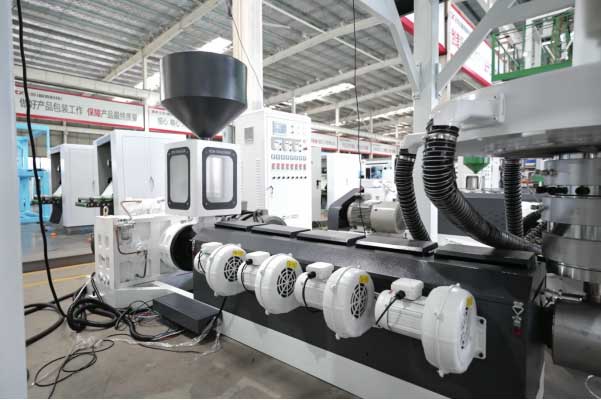
In the actual application of single-layer PE film blowing machine, 32:1 ultra-high-speed screw has shown obvious advantages in maintenance. Its structural design is relatively simple and reasonable, which makes daily cleaning, maintenance and other maintenance work more convenient.
Compared with some screws with complex structures, 32:1 ultra-high-speed screw does not have too many cumbersome internal structures and hard-to-reach parts. For example, its overall layout is relatively regular. When cleaning, the operator can easily clean the surface of the screw and some key connection parts, remove plastic impurities remaining in the production process, etc., to avoid long-term accumulation of impurities affecting the normal operation of the screw and the production quality of the film.
Moreover, the installation and disassembly design of key components of the screw also fully considers the convenience of maintenance. For some parts that are prone to wear, the connection method is easy to disassemble and replace quickly. Maintenance personnel can complete the inspection or replacement of problem parts without using overly complicated tools or spending a lot of time to disassemble other related parts. In this way, both regular maintenance and emergency repairs in the event of sudden failures can be carried out efficiently, saving the company a lot of manpower and material costs, reducing downtime caused by equipment maintenance, and ensuring production continuity.




